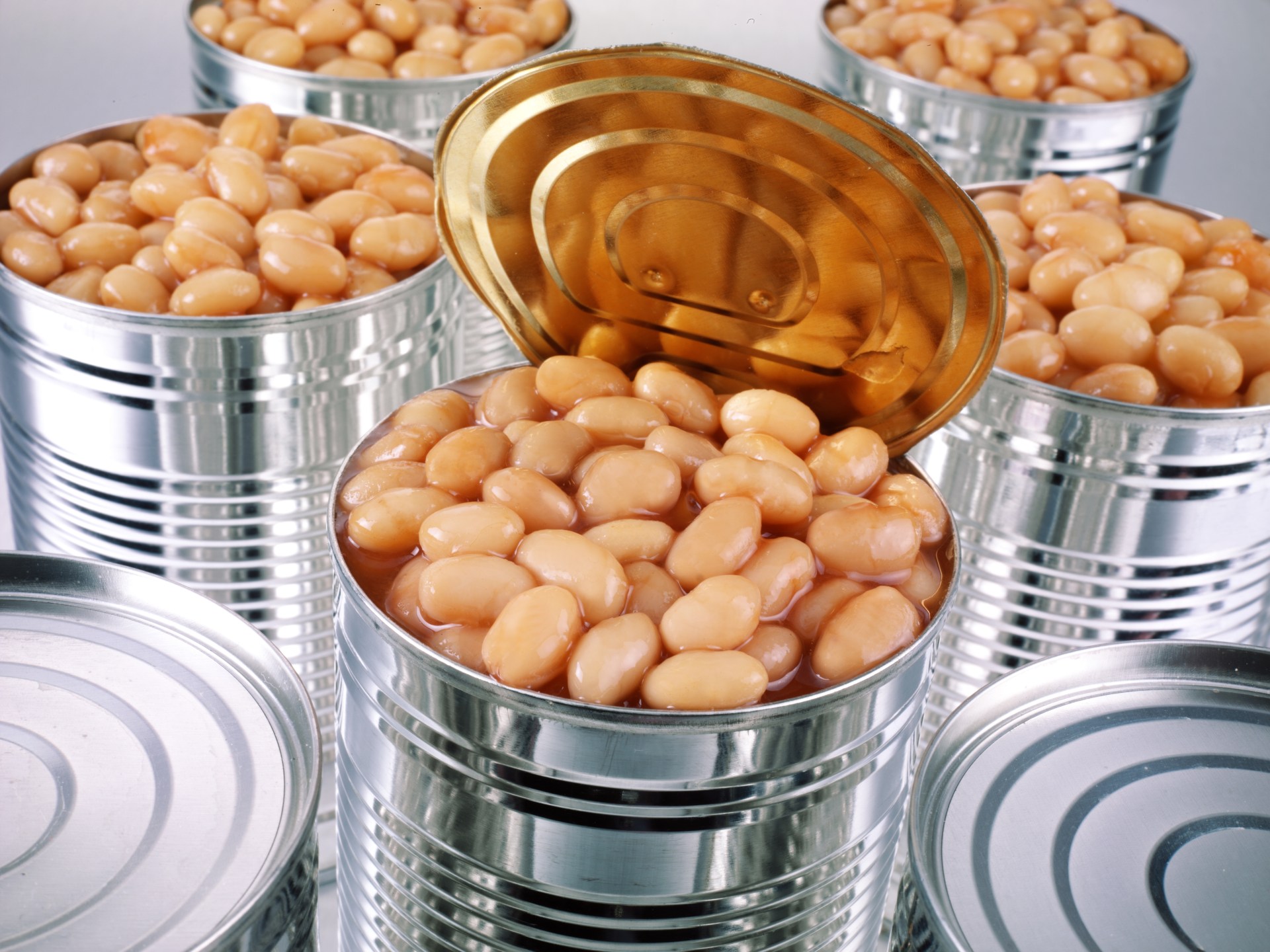If you're trying to eat healthy or diet, you should probably think twice about eating packaged foods, especially if you have high blood pressure.
While canned foods seem convenient and require only a few minutes of preparation to be ready to eat, they often contain very high amounts of sodium.
A half cup of canned peas contains 310 milligrams of sodium, compared to just 7 milligrams in a half cup of frozen peas.
While fresh vegetables not only contain less sodium, they generally contain vitamins, minerals and nutrients that are not available in canned foods.
Scientists have found a link between the extra sodium content in packaged foods and weight gain, inflammation and high blood pressure.
The Dietary Guidelines for Americans for the period 2020-2025 - published by the US Department of Agriculture - recommend consuming less than 2,300 milligrams of sodium per day as part of a healthy eating pattern.
You may be surprised when you know that many of the foods that you eat daily without tracking their nutritional components and seem healthy are in fact not. Here is a group of canned foods that contain large amounts of sodium:
the soup
Canned, packaged, and instant soups often contain a lot of sodium, not only through the salt that is primarily included in the soup ingredients, but also due to added sodium-rich flavorings, such as monosodium glutamate (MSG).
On average, canned soup contains 700 milligrams of sodium, or 30 percent of the daily recommended amount, per cup (245 grams).
Canned soup contains 700 milligrams of sodium (Pixels)
shrimp
Packaged, regular, and frozen shrimp usually contain salt added for flavor, as well as a sodium-rich preservative.
For example, sodium tripolyphosphate is usually added to help reduce moisture loss during thawing.
A 3-ounce (85-gram) portion of unbaked frozen shrimp may contain 800 milligrams of sodium, while the same amount of fresh shrimp without salt and additives contains only about 100 milligrams of sodium.
the pudding
Although pudding is a kind of jelly dessert, there is a lot of sodium hidden in that instant mix.
In addition to sodium, which includes salt added to the pudding ingredients, there are also some additives that contain a large amount of sodium, such as disodium phosphate and tetrasodium phosphate, which are ingredients that help thicken the texture of the pudding.
Half a cup of instant vanilla pudding mix (25 grams) contains (350 milligrams) of sodium, while the same amount of homemade vanilla pudding mix contains only 135 milligrams of sodium, or 6% of the daily recommended amount.
Half a cup of instant vanilla pudding mix (25 grams) contains 350 milligrams of sodium (Pixels)
vegetable juice
Vegetable juice sounds like a healthy drink, but if you don't read its ingredient label, you might be drinking a lot of sodium, too.
An 8-ounce (240-milliliter) serving of vegetable juice may contain 405 milligrams of sodium.
tomato sauce
You may not think to check the sodium in a can of regular tomato sauce or other canned tomato products, but you should do so starting today, as only 1/4 cup (62 grams) of tomato sauce contains 321 milligrams of sodium.
salad dressing
Some of the sodium in salad dressing comes from salt.
In addition, some brands add flavoring that contains sodium, such as monosodium glutamate, disodium inosinate, and disodium guanylate.
In a review of major brand-name foods sold in U.S. stores, the sodium in salad dressing averaged 304 milligrams per 2 tablespoons (28 grams).
Some brands put sodium-containing flavoring additives (Pixels) in salad dressing.
bacon
Canned sausage and salted bacon contain significant amounts of sodium, with a 1-ounce (28-gram) serving of canned sausage containing 233 milligrams of sodium.
But if some canned foods and vegetables are the most appropriate option, there are still ways to make them healthier, by drying and rinsing some canned foods and vegetables for a few minutes, as it can reduce the sodium content by 9% to 23%, according to the “Health” website. Line" (Healthline).

